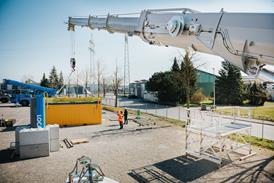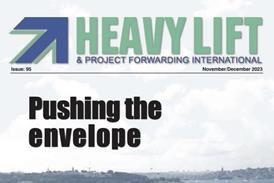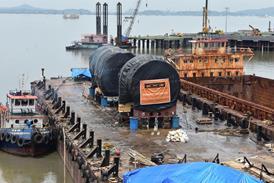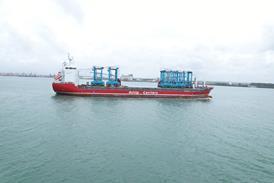March 1 - US management consulting firm A.T. Kearney is "very optimistic" about the prospects for China's breakbulk market, saying important structural changes in the country's economy and a growing sophistication among Chinese shippers suggest opportunit
Partner and Head of Asia Pacific Practice Mui-Fong Goh said China's breakbulk grew 11 percent year-on-year growth in 2010 in terms of port throughput volume to 954 million tonnes from 860 million tonnes. "The market recovered fast in 2010, attributed to growth in iron and steel, lumber and machinery exports. Specifically, exports of machinery grew 30 percent," she said. "China breakbulk volumes are expected to maintain their growth projectile," said Goh, spurred in part by compound average volume
growth rates of 16 percent in construction equipment and 19 percent in wind turbines between now and 2015.
In 2010, the export value of construction equipment was USD10 billion. A.T. Kearney forecasts this to increase to USD26 billion by 2015. "That's a very attractive market," she said.
Underpinning this was a concerted effort by the Chinese government to upgrade the operating and technological capabilities of companies in key industries, said Goh. The government was also encouraging globalization by Chinese companies, pushing exports as well as growth through overseas acquisition.
Citing the crawler crane market as an example, Goh said more than 250f the units made by Chinese manufacturers in 2010 were exported, primarily to India, Southeast Asia and South America, adding that this proportion was likely to grow "rather quickly."
In the same year, China led the world in terms of installed wind power capacity, helped in part by Beijing's pledge to invest RMB500 billion (around GBP50 billion) in the wind-power industry over the next
ten years.
Currently, the bulk of Chinese production of wind turbine units goes to the domestic market, but exports are expected to account for 30 percent of volume by 2015.
In 2011, China exported 361 wind turbine units to the European Union, 300 to India, 71 to the USA, 70 to Australia, and 29 to South America. As Chinese companies export higher value-add products and expand
domestic distribution to reach second and third tier cities and remote regions, their supply chains are becoming more complex.
Already there was a noticeable shift in Chinese shippers' attitude towards logistics, Goh said. While Chinese shippers remain "rather price driven," they were now placing greater emphasis on working with
a logistics partner that could provide more value-added services and help them at different stages of the supply chain, she said.
International transportation companies were well positioned to benefit from these emerging needs, Goh said, but noted that Chinese logistics companies were "aggressively" transforming themselves in order to
catch up.
"China's breakbulk market is evolving very quickly, and in the right direction," said Goh. "[But] A lot of care, control and courage will be required to succeed."















